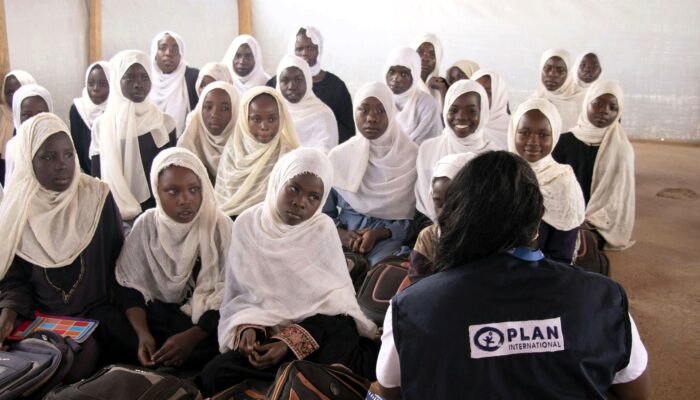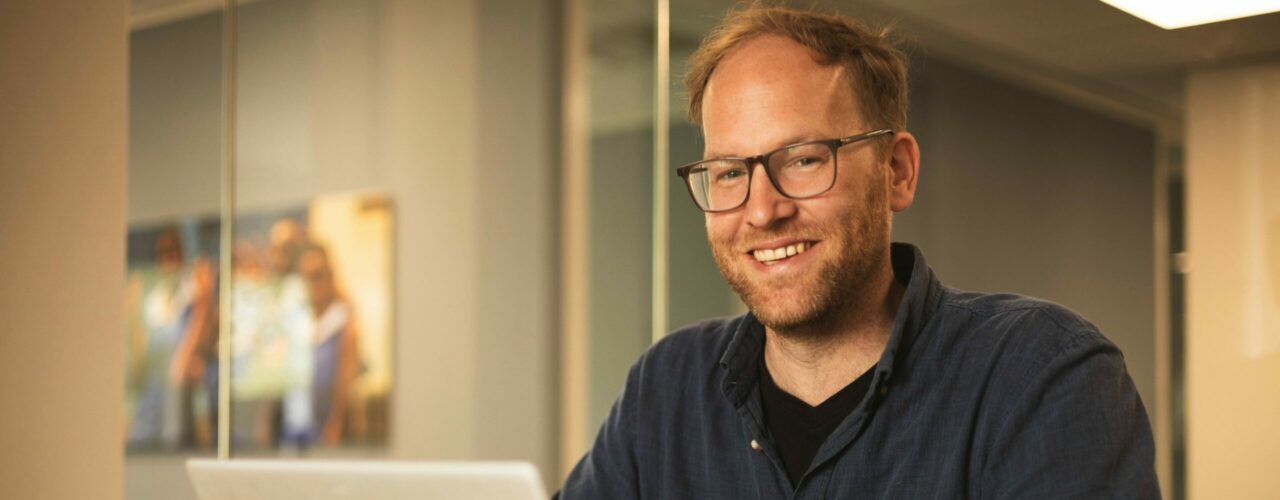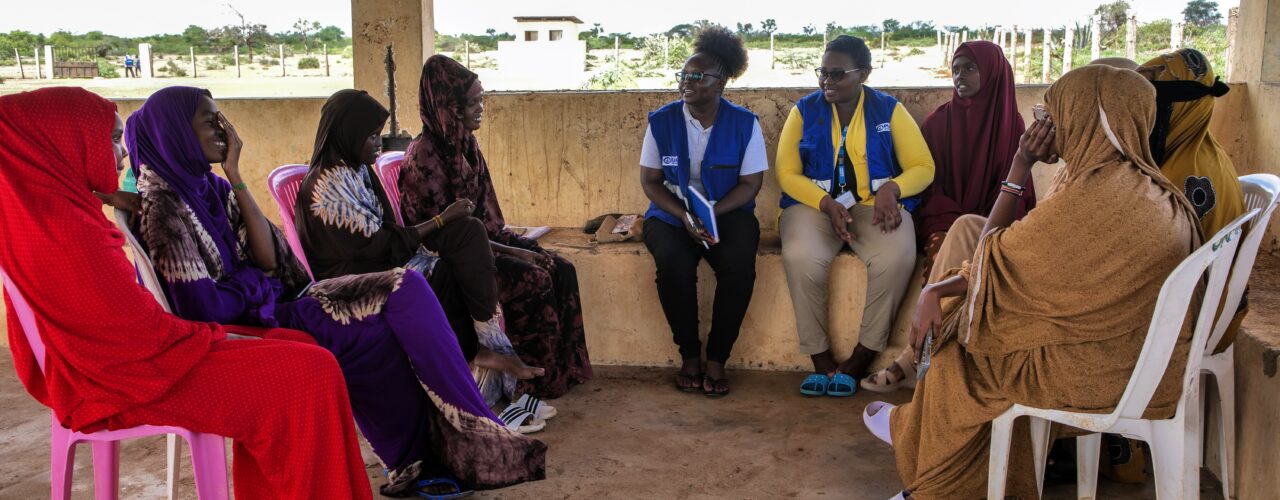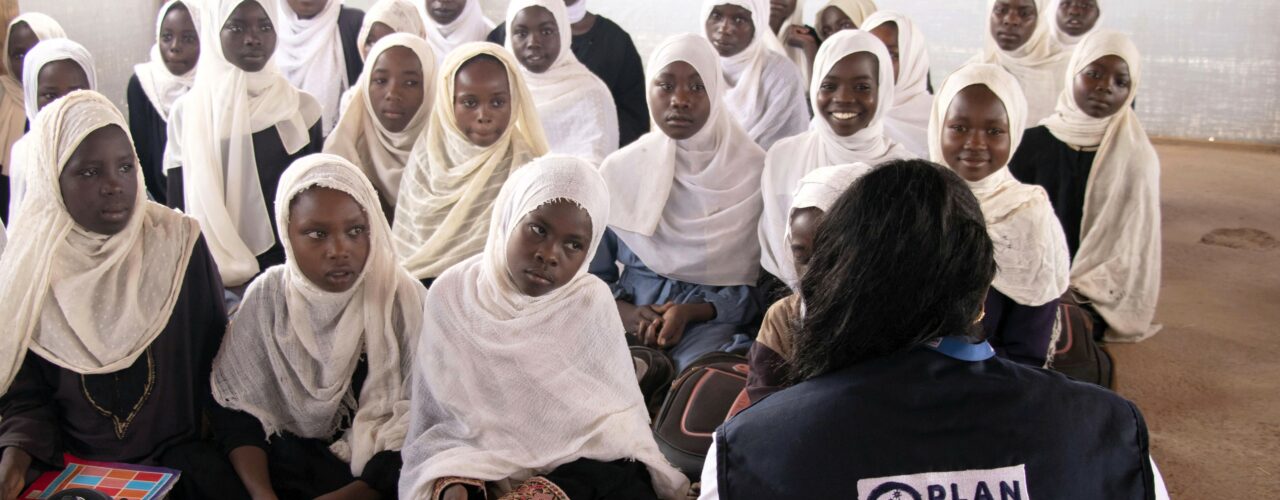The nexus, scenario planning and more - interview with Mark van der Boon


You are supporting projects in nexus contexts, can you briefly explain what that is?
It is quite complicated to give a short explanation of the term ‘nexus’. I even do not know if there is a good explanation for it. But as I see it, it is the area where humanitarian aid, development work and peace-building overlap. To make it more clear; in quite some contexts where we are working on longer term development, humanitarian aid is still needed. Think of places where people need support in only some seasons of the year, in places where there are a lot of displaced people or refugees and/or places with (violent) tensions. For Plan International, it means that we try to adapt to changing contexts in projects. We try to always adapt the objectives of humanitarian action to support people who need assistance in the best way possible. To make this possible, needs assessments are very important, because in this way, you acknowledge that needs are different for every country, community and even for every individual. An example: school-going adolescent girls are affected differently by a cyclone than a male farmer. And when a crisis progresses, needs change too.
What are the biggest challenges if you look at the needs assessments that you carry out?
The biggest challenge of needs assessments is the lack of funding to carry them out. Many donors start giving funding when the programmes start, and not before that [when the needs assessments are necessary]. And that is a big issue since it has a huge impact on how the project will be implemented. Not mapping needs in advance might result in faulty project design, or redesigning during the implementation stage.
It is possible to hire external companies to do needs assessments for you, but humanitarian aid organisations should be able to do needs assessments themselves. During the needs assessments, our on-site staff or volunteers can already connect with people, and with the communities. Since it is such an important aspect of implementing a project, I decided to develop a training module for staff or volunteers who assess needs for the first time – which I am very proud of.
Besides lack of funding, safety and logistical difficulties, it is often hard to reach communities hit by disaster. Regions might be inaccessible due to fighting or inaccessible because roads are flooded. And crises often result in displacement, requiring us to reach the community at another location.
How do you carry out needs assessments?
Often we start by choosing locations. Sometimes Plan International is already present in a region, or we want to try to reach communities living in areas isolated by distance, terrain or transportation. Our on-site colleagues start with a rapid needs assessment to see what the biggest needs are, often combined with, if available government statistics or information that other NGOs in the area have.
Then we decide which methods we want to use to gather more information, we always include the communities in this process. We organise conversations and sessions with men, women, children, adolescents girls, also specifically with people with disabilities – preferably we do this in separated groups. Depending on the time that we have to conduct the research, we strive to ensure that all groups are represented during the conversations.

What are the challenges that you face during needs assessments?
It’s easy to underestimate the logistics around a needs assessment. It often takes our teams a lot of time to reach the right places, especially as we aim to reach communities recently hit by conflict or disaster. Some places are only accessible by highly degraded roads or by boat or are unsafe to reach.
Another challenge is that we frequently support communities that are native in different language and/or dialect, meaning that even for our in-country staff, translators are needed. Considering that some countries have numerous dialects, you understand this can be quite a challenge. We often rely on great community volunteers and enumerators, but for correct interpretation we prefer to work with staff trained in needs assessments.
Plan International is mostly focused on girls and young women, how do you integrate this focus into the needs assessments?
One of the most important aspects is that we get to see and speak the girls and young women. This sounds obvious, but we regularly face situations in which men want to speak on behalf of the rest of their community. This means we miss out on the perspectives of girls and young women and the specific challenges and problems they face. As mentioned earlier, humanitarian crises affect girls and women in radically different ways – they are at risk of gender-based violence and need support in for example menstrual hygiene management.
Besides this, we have gender specialists within the organisation who assist us when creating a program, in the implementation phase and in carrying out the evaluations. In general, we always try to include conversations around gender norms in our programs.

Sometimes Plan International does not have another choice than to change a program or even move a project. How do you do that and how do you adapt to a new context?
Relocating a project is not as simple as it sounds. You have to realise that your previous programs involved communities with people that were supported or had jobs within the program. We had to relocate a programme in Ethiopia for example, because conflict hindered entry to the area. The donor did not want to support a humanitarian program, instead of the development program that we originally had planned to role out. Despite looking for opportunities to continue implementation via humanitarian action, ultimately we had to make the hard decision to move to completely different locations, where it is very important to do a new context analysis. However, in some countries, like Sudan, continuing existing programs is sometimes simply impossible due to escalating dangers that make accessing the area too risky, and large reprogramming efforts were/are required to continue doing any programming.
As explained you are PMEL advisor and part of the Nexus working group of Plan International in the Netherlands. Through that working group, you are involved in Scenario and Response Planning. Can you explain what that entails?
Sure. In scenario planning, together with experts and stakeholders, we try to identify triggers that might change the context we work in. Think of triggers that force us to hit the pause button for a project, or a scenario where community members can no longer convene in large groups as during the covid pandemic. Building scenarios helps us to prepare humanitarian operations in changing contexts.
After that, response planning comes into place. Once you have different scenarios; you take a look at responses for different scenarios and how you need to adapt your planned activities to still achieve your planned results. In an ideal situation, the donor approves different responses before a scenario turns reality. Especially in difficult nexus contexts, I love working with flexible tools like these.
What in your work gives you energy?
I enjoy trying new things and apply new methods and tools in my work, something that Plan International encourages me in. Besides this, I love working with our teams that implement the activities and collaboratively find practical and realistic solutions to challenges they face. I really enjoy exchanging thoughts and seeking for solutions together. The bigger the challenge, the better.
The bigger the challenge, the better
What kind of situations touched you?
During my studies, I worked in Eastern Congo in the Kivu’s for a local organisation where we researched the informal goldmining sector. The conditions inside those mines are extreme. Violence was common, armed rebels or soldiers would often control the mines. Many young children who were working there, started very early in the morning and would use drugs and alcohol to cope with their fear and stress of getting into unsafe poorly constructed shafts. I saw boys who were ten years old, walking barefoot and working with dangerous substances like mercury. Children working in these contexts really hit me, especially when I realise that the minerals collected are used for our smartphones and televisions.
What are you dreaming of?
Within our projects, I really hope that we keep on putting the needs of the affected communities first and continue developing ways to do better. That we do not only measure results or focus on targets and goals but that look at what people need before the implementation phase and keep on adapting during the whole program.
That we do not only measure results or focus on targets and goals but that we look at what people need before the implementation phase and keep on doing this during the whole program.
Read more about Plan International and its projects here.
Author: Marianne van Elst-Sijtsma
Date: 15 august 2024
